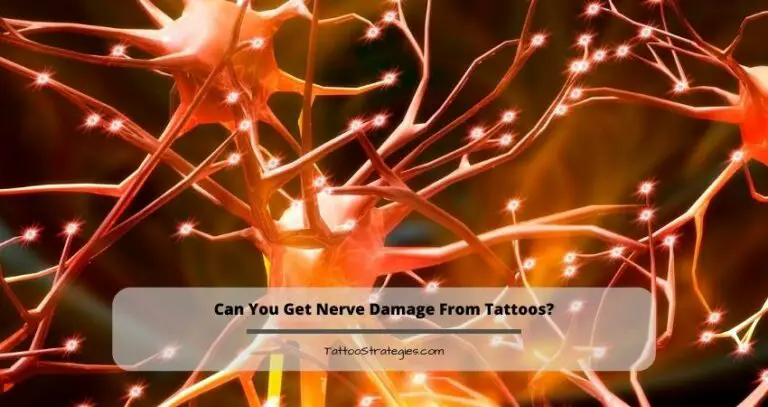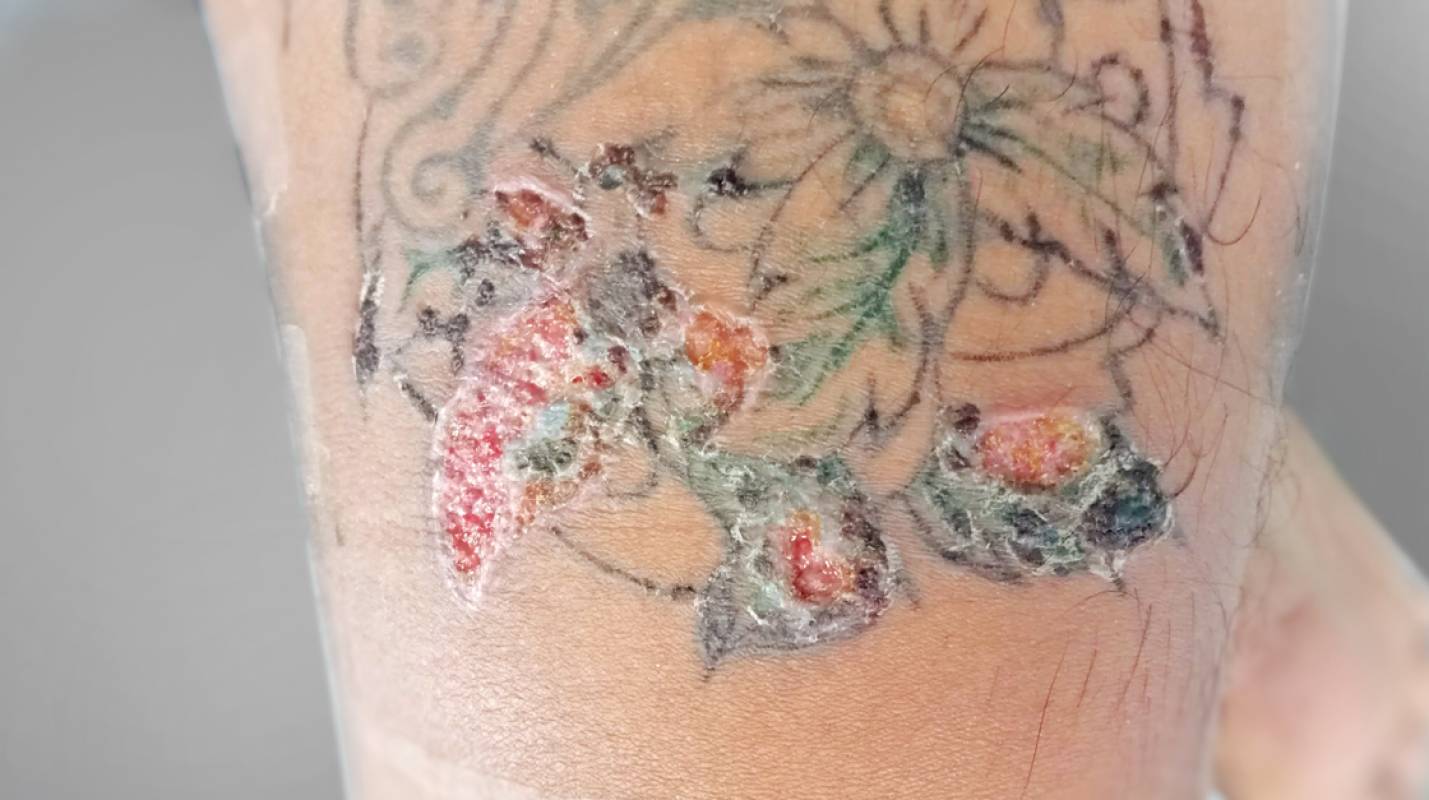
Will Shaving Over Your Tiny Tattoo Turn it into a Tiny Tragedy? The Truth About Tattoo Fade
So, you got that adorable little hummingbird buzzing on your ankle, or maybe a minimalist mountain range gracing your wrist. You love it, cherish it, and want it to stay vibrant forever. But life, as it often does, throws a hairy wrench into the works. You need to shave! And the question pops into your head, a tiny, persistent worry: Will shaving over my small tattoo cause it to fade faster?
Let’s dive into the fascinating world of skin, ink, and shaving, and uncover the truth behind this common concern.
1. The Tattoo’s Deep Dive: Understanding Ink Placement
First things first, let’s remember where your tattoo actually lives. Tattoo ink isn’t just sitting on the surface of your skin like a temporary sticker. It’s injected deep into the dermis, the second layer of your skin, which is far below the epidermis, the top layer that’s constantly shedding.
This depth is crucial. The dermis is a stable environment, designed to hold onto that precious ink and keep your art looking sharp for years to come. The epidermis, on the other hand, is a fickle friend, constantly renewing itself and sloughing off dead skin cells.
2. Shaving 101: A Surface-Level Situation
Now, let’s talk shaving. Shaving, whether you’re wielding a razor blade or an electric shaver, primarily targets the hair shaft and the very top layer of skin. You’re essentially skimming the surface, removing hair and a minuscule amount of dead skin cells.
Think of it like sweeping your porch. You’re getting rid of the debris on the surface, but you’re not digging down to the foundation.
3. The Friction Factor: Does Shaving Exert Enough Force to Fade Ink?
Here’s where things get interesting. While shaving itself doesn’t directly attack the ink in the dermis, repeated friction can play a role in tattoo fading over time. The key word here is repeated.
Imagine rubbing a piece of sandpaper lightly over a painted wall every day. Initially, nothing much happens. But over months and years, that constant abrasion will eventually start to wear down the paint.
Similarly, aggressive shaving, especially with a dull blade or without proper lubrication, can cause irritation and micro-abrasions to the skin. This, in turn, can contribute to a gradual breakdown of the skin’s structure, potentially leading to some ink dispersal over a very long period.
4. The Role of Exfoliation: Shaving’s Unexpected Side Effect
Shaving is, in essence, a form of exfoliation. It removes dead skin cells from the surface, revealing fresher skin underneath. While this is generally a good thing for skin health, excessive exfoliation can be detrimental to your tattoo’s vibrancy.
Over-exfoliating, whether through aggressive shaving, harsh scrubs, or chemical peels, can thin the epidermis and potentially make the tattoo ink appear less vibrant.
5. The Importance of Hydration: Keeping Your Tattoo Happy and Healthy
Hydration is your tattoo’s best friend. Well-hydrated skin is supple, resilient, and less prone to irritation. When your skin is dry, it’s more susceptible to damage from shaving, friction, and environmental factors.
Moisturizing regularly, especially after shaving, helps to maintain the skin’s barrier function and protect the ink from fading.
6. Blade Sharpness: A Dull Blade is a Tattoo’s Worst Enemy
Using a dull razor blade is like trying to cut butter with a spoon. You end up applying more pressure and dragging the blade across the skin, causing irritation, nicks, and ingrown hairs.
A sharp blade, on the other hand, glides smoothly over the skin, minimizing friction and reducing the risk of damage to the delicate tattoo area.
7. Shaving Cream Savvy: Choosing the Right Product
The shaving cream you use can also make a difference. Opt for a product that’s specifically designed for sensitive skin and free of harsh chemicals, fragrances, and alcohol. These ingredients can irritate the skin and contribute to dryness, which can ultimately impact your tattoo’s appearance.
Look for shaving creams or gels that contain moisturizing ingredients like aloe vera, shea butter, or vitamin E.
8. Shaving Technique: Slow and Steady Wins the Race
Rushing through your shaving routine is a recipe for disaster. Take your time, use gentle strokes, and avoid pressing down too hard on the razor. Shave in the direction of hair growth to minimize irritation and ingrown hairs.
9. Post-Shave Care: The Crucial Final Step
After shaving, rinse your skin thoroughly with cool water and pat it dry with a soft towel. Avoid rubbing, which can further irritate the skin.
Apply a fragrance-free, hypoallergenic moisturizer to the shaved area to replenish lost moisture and protect the skin’s barrier function.
10. Sun Protection: The Ultimate Tattoo Fading Culprit
While shaving might play a minor role in tattoo fading, the sun is the real villain. UV rays are notorious for breaking down tattoo ink, causing it to fade and lose its vibrancy over time.
Always apply a broad-spectrum sunscreen with an SPF of 30 or higher to your tattoo whenever it’s exposed to the sun. This is the single most effective way to prevent tattoo fading.
11. Tattoo Placement: Some Areas Are More Prone to Fading
The location of your tattoo can also influence how quickly it fades. Tattoos on areas that are frequently exposed to friction, such as the ankles, feet, or wrists, are more likely to fade than tattoos on areas that are less exposed, such as the upper back or thighs.
Similarly, tattoos on areas that are frequently exposed to the sun, such as the shoulders or neck, are more susceptible to fading.
12. Tattoo Size Matters (But Not How You Think):
While this article focuses on small tattoos, the principles apply to larger ones as well. However, the visual impact of fading might be more noticeable on a larger tattoo simply because there’s more surface area to observe.
13. The "New Tattoo" Factor: Extra Care Required
If you’ve recently gotten a tattoo, it’s crucial to avoid shaving the area until it’s fully healed. Shaving a fresh tattoo can introduce bacteria, disrupt the healing process, and potentially lead to infection. Follow your tattoo artist’s aftercare instructions carefully and wait until the tattoo is completely healed before shaving.
14. When to Worry: Signs of Excessive Fading
While some fading is inevitable over time, there are certain signs that indicate your tattoo might be fading more rapidly than it should. These include:
- Significant loss of color vibrancy
- Blurring of the tattoo’s outlines
- Patchy discoloration
- Raised or irritated skin around the tattoo
If you notice any of these signs, consult with a dermatologist or a qualified tattoo artist.
15. The Verdict: Shaving Can Contribute, But It’s Not the Main Culprit
So, will shaving over your small tattoo cause it to fade faster? The answer is a nuanced "maybe." Shaving alone is unlikely to cause significant fading, especially if you’re using proper techniques, a sharp blade, and moisturizing regularly.
However, repeated friction, aggressive shaving, and lack of sun protection can contribute to a gradual breakdown of the skin and potentially accelerate the fading process.
Conclusion: Protecting Your Tiny Treasure
Ultimately, the key to preserving your tattoo’s vibrancy is to practice good skin care habits. This includes using a sharp blade, moisturizing regularly, protecting your tattoo from the sun, and avoiding excessive exfoliation. By taking these precautions, you can enjoy your beautiful body art for years to come, without having to worry about it fading into oblivion. Shave responsibly, love your ink, and let your tiny tattoo shine!
Frequently Asked Questions (FAQs)
1. I just got a new tattoo. How long should I wait before shaving over it?
Wait at least 2-4 weeks, or until the tattoo is completely healed. Look for signs like no more scabbing, flaking, or redness. When in doubt, ask your tattoo artist!
2. What kind of shaving cream is best for tattoos?
Look for shaving creams or gels that are fragrance-free, hypoallergenic, and designed for sensitive skin. Ingredients like aloe vera, shea butter, or vitamin E are a plus.
3. Can I use an electric shaver over my tattoo?
Yes, electric shavers can be gentler than razor blades, but make sure the shaver is clean and the foil/blades are in good condition.
4. I’m noticing some fading on my tattoo even though I’m careful. What should I do?
Consider a tattoo touch-up. A skilled artist can revitalize the colors and sharpen the lines, bringing your tattoo back to its former glory.
5. Does the color of the tattoo ink affect how quickly it fades?
Yes, certain colors, like lighter shades of blue, pink, and yellow, tend to fade faster than darker colors like black and navy. This is because they absorb less light and are more susceptible to UV damage.











